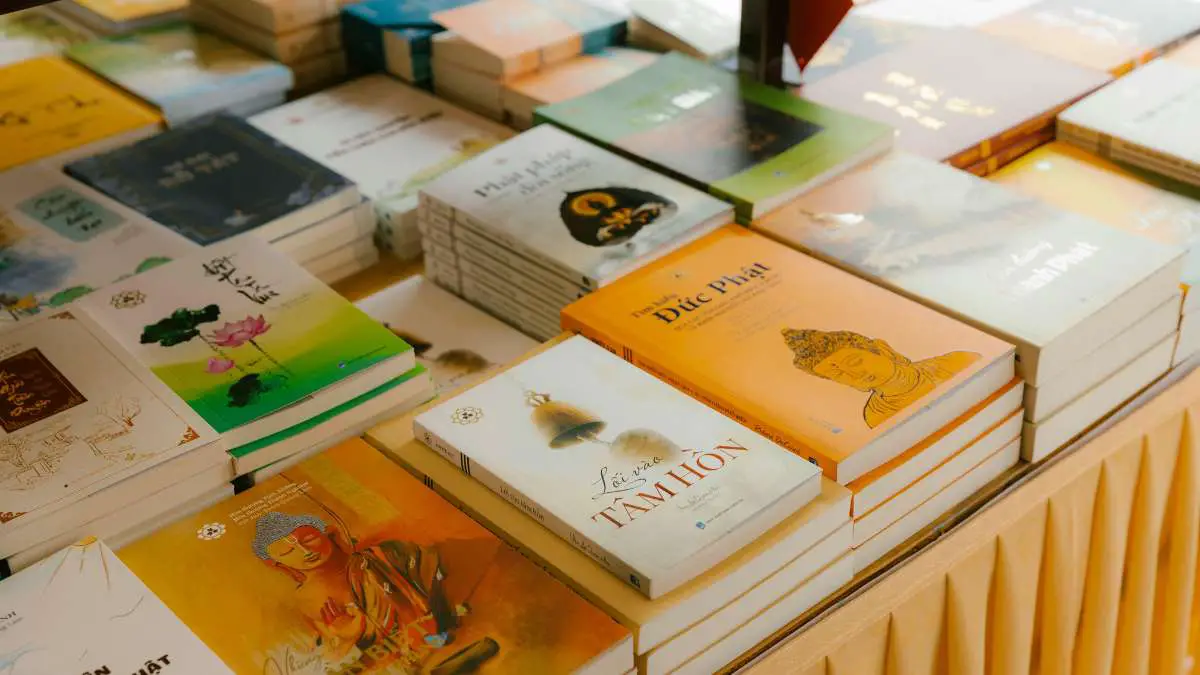Table of Contents
- Introduction
- Southeast Asia: A Burgeoning Regional Powerhouse
- Sub-Saharan Africa: Rising from the Margins
- India: Scaling New Heights
- Latin America: Turning the Page
- The Middle East and North Africa (MENA): A Quiet Surge
- Central and Eastern Europe: Reclaiming the Narrative
- East Asia: Diversifying Beyond Dominance
- Central Asia and the Caucasus: Emerging from the Shadows
- Conclusion
Introduction
The global publishing industry in 2025 is undergoing a renaissance, driven by technology, shifting reader habits, and expanding literacy in emerging regions. Traditional powerhouses like the United States and the UK still lead in output and influence, but there’s a notable shift in where growth is happening. From Southeast Asia to Sub-Saharan Africa, dynamic new players are entering the stage, embracing digital transformation, local language publishing, and new content monetization models. As consumption patterns evolve and economic conditions improve in various parts of the world, publishers set their sights beyond familiar borders.
This article explores the fastest-growing publishing markets in 2025, focusing on countries and regions experiencing notable acceleration in book production, readership expansion, digital innovation, and international interest. We tour across continents to highlight what’s fueling this momentum and why these regions are poised to shape the next era of global publishing. If you’re a publisher, author, investor, or policy-maker, understanding these rising markets is no longer optional—it’s essential.
Southeast Asia: A Burgeoning Regional Powerhouse
Southeast Asia has emerged as one of the most exciting regions for publishing growth in 2025. Countries like Indonesia, Vietnam, the Philippines, and Malaysia are experiencing robust demand for both print and digital books. This growth is supported by rising literacy rates, a burgeoning middle class, and strong government initiatives promoting education and local content creation. For instance, Indonesia’s national book program has been instrumental in increasing reading habits across its archipelago, while Vietnam is investing heavily in digital infrastructure to make learning resources more accessible.
Digital publishing is also catching on quickly in this region. Mobile-first reading platforms are seeing explosive growth, especially in urban centers with high smartphone penetration. Malaysian publishers, for example, are moving toward multilingual publishing strategies that cater to diverse audiences, while Vietnam’s edtech startups are integrating textbooks with interactive learning apps. These innovations create a vibrant ecosystem that blends traditional publishing values with forward-looking digital strategies.
Sub-Saharan Africa: Rising from the Margins
Sub-Saharan Africa is no longer the overlooked segment of the global publishing map. Countries like Nigeria, Kenya, Ghana, and South Africa are experiencing a publishing renaissance deeply intertwined with their broader economic and cultural growth. Nigeria, for instance, has become a hub for self-publishing and independent authors, driven largely by mobile access and platforms, which allow writers to reach vast audiences without traditional gatekeepers.
Kenya and Ghana are also gaining momentum with robust investments in educational publishing. The demand for locally relevant content—books that reflect African identities, languages, and experiences—is rising, creating opportunities for local and international publishers. Governments and NGOs support literacy initiatives and textbook distribution, and private-sector innovation is helping digitize these efforts. Sub-Saharan Africa’s publishing growth is not just a story of numbers but of cultural reclamation and the rise of indigenous voices.
India: Scaling New Heights
India’s publishing market has long been one of the largest in volume, but 2025 sees it ascending in terms of innovation, diversity, and reach. With a population of over 1.4 billion and a young demographic hungry for education and entertainment, India is experiencing an unprecedented boom in both regional language publishing and digital consumption. Tier 2 and Tier 3 cities are fueling much of this growth, with new readers coming online daily thanks to cheaper smartphones and improving internet infrastructure.
One of the standout trends is the rise of regional language ebooks. Hindi, Tamil, Bengali, and Marathi titles are now seeing download rates comparable to their English counterparts, challenging the longstanding dominance of English-language publishing in the country. Audiobooks and podcasts are also growing rapidly, as time-strapped consumers seek more convenient ways to engage with content. Indian startups are capitalizing on these trends by building platforms tailored to multilingual audiences, setting India up as a model for inclusive publishing in the digital age.
Latin America: Turning the Page
Latin America’s publishing market will transform in 2025, moving from stagnation to significant acceleration, particularly in Brazil, Mexico, and Colombia. These countries are embracing new technologies to overcome traditional challenges such as distribution bottlenecks and high production costs. Digital publishing, including ebooks and audiobooks, is helping publishers reach wider audiences at a lower cost, especially in remote or underserved regions.
Brazil, in particular, has become a standout for its public-private partnerships that support local authors and incentivize literacy programs. Mexico’s educational publishing sector is also expanding, aided by reforms integrating technology into classrooms. Meanwhile, Colombian publishers are entering the international scene, especially in the Spanish-language market. Latin America’s new publishing boom is fueled by youthful demographics, rising education levels, and a growing hunger for content that reflects regional stories and identities.
The Middle East and North Africa (MENA): A Quiet Surge
Often overshadowed in global publishing discussions, the MENA region is experiencing a quiet but meaningful surge in 2025. Countries like Egypt, the UAE, Saudi Arabia, and Morocco are investing heavily in literacy, translation, and digital infrastructure. Government initiatives such as Saudi Arabia’s Vision 2030 and the UAE’s Knowledge Project set the stage for long-term growth by promoting reading culture and supporting local authors.
Arabic publishing is evolving rapidly, with increased high-quality translations, children’s literature, and educational texts. Events like the Cairo International Book Fair and the Sharjah Book Fair are growing in both size and global relevance, serving as launchpads for regional talent. Meanwhile, digital publishing allows authors from conflict-affected areas to bypass censorship and economic barriers, contributing to a more diverse and resilient publishing landscape. MENA’s publishing revival is as much about cultural preservation as innovation.
Central and Eastern Europe: Reclaiming the Narrative
Central and Eastern Europe, including Poland, Romania, and Ukraine, is witnessing a resurgence in publishing driven by local pride and European integration. These countries embrace new formats and distribution models while doubling down on preserving linguistic and cultural heritage. Despite ongoing geopolitical challenges, Ukraine has seen an uptick in publishing output, especially in Ukrainian-language materials, poetry, and contemporary fiction.
In Poland and Romania, government support and a growing reading culture among the youth are leading to increased demand for both domestic and translated works. Independent publishers are thriving, offering alternatives to commercial mainstream literature, and new startups are helping digitize vast back catalogs of local literature. This region’s growth is a reminder that publishing success doesn’t have to follow Western templates—it can be deeply rooted in national identity and history.
East Asia: Diversifying Beyond Dominance
While countries like China, Japan, and South Korea have long been major players in global publishing, 2025 marks a year of diversification and international outreach. China’s publishing sector is expanding into Southeast Asia and Africa through Belt and Road publishing collaborations, while Japan is seeing a revival of interest in literature beyond manga, especially in international translations of contemporary fiction.

South Korea continues to ride the Korean Wave (Hallyu), with Korean literature, webtoons, and digital comics gaining traction in global markets. These countries are also investing heavily in AI-driven publishing tools, personalization algorithms, and multimedia integration. What’s new is the shift in focus from quantity to quality and from domestic dominance to international partnerships. East Asia is refining its publishing strategies to remain relevant in an increasingly multipolar world.
Central Asia and the Caucasus: Emerging from the Shadows
Regions like Kazakhstan, Uzbekistan, Georgia, and Armenia are starting to appear on the global publishing radar in 2025. These countries are investing in cultural preservation through literature, with a new generation of writers exploring themes of post-Soviet identity, migration, and modernization. Government-funded initiatives and international partnerships are helping bring these voices to a broader audience.
Digital publishing is particularly impactful here, as it offers a way to overcome logistical challenges and limited bookstore infrastructure. Translations into English and other major languages are increasing, and diaspora communities are helping amplify these emerging voices. While still in the early stages, Central Asia and the Caucasus show signs of becoming literary regions to watch in the next decade.
Conclusion
The global publishing landscape in 2025 is vibrant, fluid, and increasingly decentralized. The fastest-growing markets are no longer confined to the traditional giants but are sprouting from regions once considered peripheral. From the energetic startups in Nairobi and Hanoi to the literary resurgence in Tbilisi and Bogotá, publishing today is one of inclusivity, innovation, and cultural resurgence. Digital tools are helping democratize access, while regional identities shape content in powerful new ways.
The message for publishers looking to grow is clear: look outward, think local, and embrace change. The fastest-growing publishing markets in 2025 are not just expanding economically—they’re rewriting the rules of what publishing can be. As we move further into the decade, these emerging regions will not only contribute to the global book trade but also redefine it.
